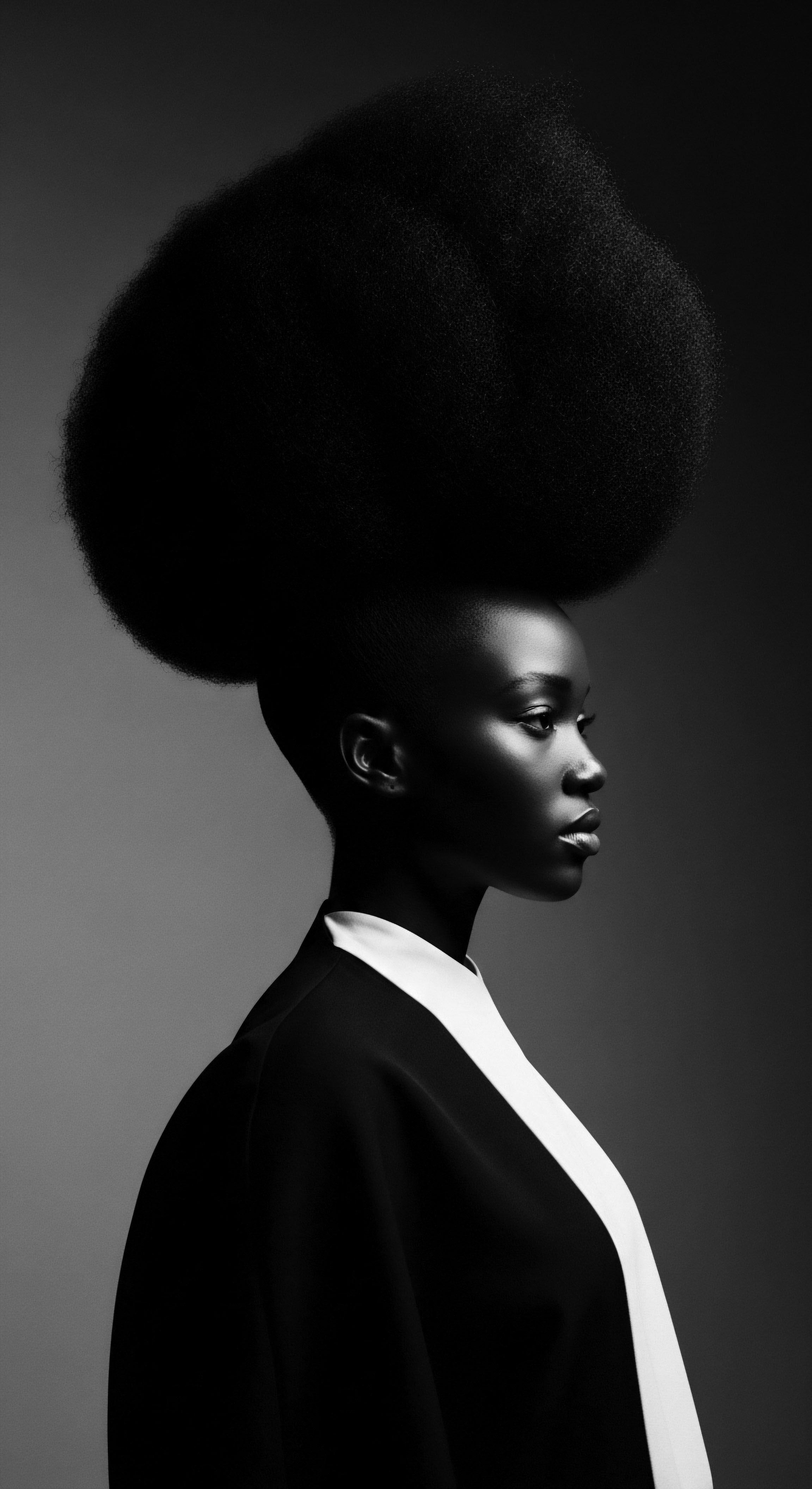
Roots
To journey into the heart of textured hair resilience, one must first recognize the deep, resonant echoes carried within each strand. For those with coils and curls, hair is seldom a mere adornment; it is a living archive, a sacred trust handed down through generations. It holds stories of survival, artistry, and an enduring connection to heritage, particularly within Black and mixed-race communities.
The very mention of “resilience” for textured hair invokes not just physical fortitude, but a spiritual and cultural strength forged over centuries. It asks ❉ what ancient wisdom, what elemental gifts from the earth, might whisper secrets to its innate power, nurturing it from its very core?
Our exploration turns to rhassoul clay, a geological gift whose origins are as ancient as the practices it has graced. This mineral-rich earth, born from the Atlas Mountains of Morocco, has served as a cornerstone of traditional cleansing and beautification rituals for centuries. Its name, derived from the Arabic word ‘rhassala,’ meaning “to wash,” speaks volumes of its foundational role in historical care. Unlike modern synthetic formulations, rhassoul clay enters our discourse not as a new invention, but as an ancestral offering, a testament to the ingenuity of those who came before us, seeking harmony with nature for their deepest needs.
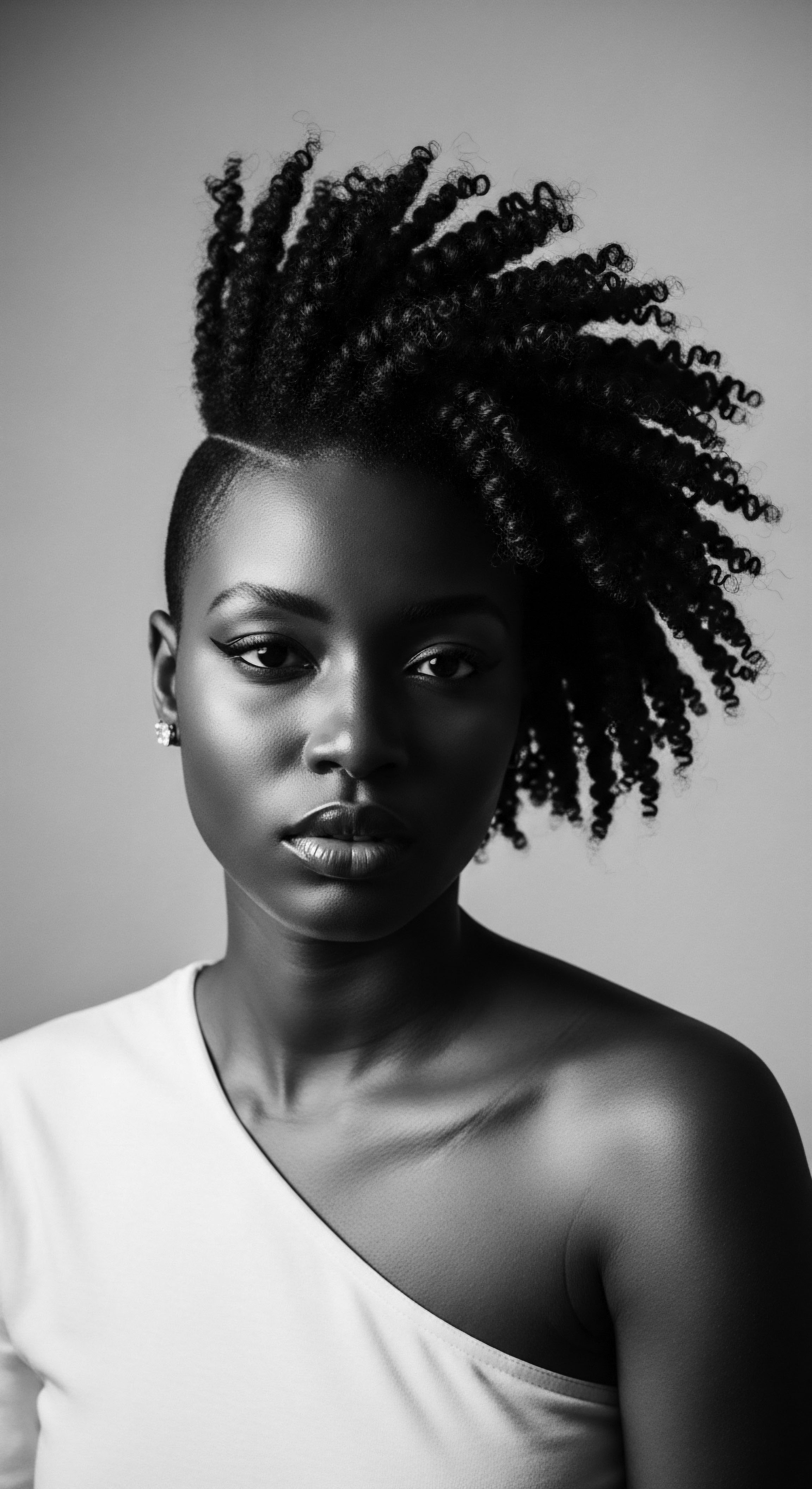
Hair Anatomy and Ancient Perceptions
The intricate structure of textured hair – its helical twists, its unique elliptical cross-section, its propensity for curl pattern variations – sets it apart in the biological realm. Each curve and bend along the hair shaft represents a potential point of fragility, a challenge that ancestral practices intuitively addressed. Long before microscopes unveiled the cellular makeup of the hair fiber, communities possessed an implicit understanding of hair’s inherent needs ❉ moisture, protection, and gentle cleansing. Their knowledge, passed through oral traditions and lived experience, recognized that hair, like a precious plant, required specific nourishment and an environment conducive to thriving.
Consider the hair strand itself. It comprises an outer cuticle, akin to protective scales, a cortical layer that provides strength, and sometimes a central medulla. Textured hair often possesses a thinner cuticle layer and a flatter cross-section, which can contribute to moisture loss and susceptibility to breakage.
The resilience we speak of, therefore, requires fortifying these inherent characteristics, not fighting them. Ancestral wisdom, particularly within North African traditions, saw rhassoul clay not only as a cleanser but also as a substance that brought balance to the scalp and hair, contributing to its intrinsic robustness.
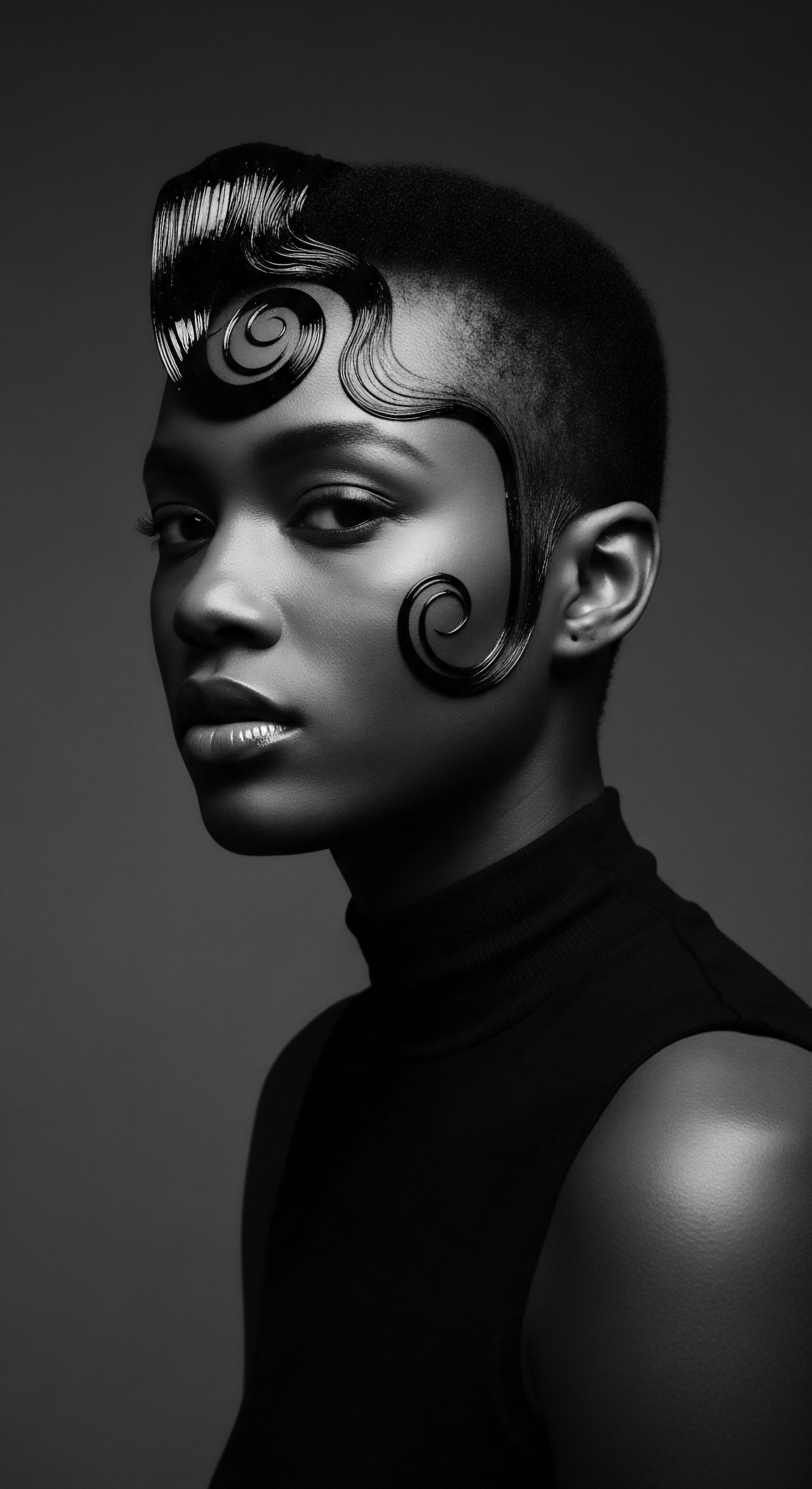
Traditional Classifications and Elemental Lexicon
While contemporary systems categorize textured hair into numerical and alphabetical types (3A to 4C), ancient communities had their own nuanced classifications. These were often rooted in observation of growth patterns, density, and how hair responded to various natural treatments, all imbued with cultural significance. The language used to describe hair was not merely descriptive; it was often imbued with spiritual and communal meaning, reflecting identity, status, and tribal belonging.
The introduction of rhassoul clay into this historical lexicon brings with it concepts that align with elemental biology. Its mineral composition – rich in silica, magnesium, calcium, and potassium – speaks to its ability to impart physical strength and support hair’s structural integrity. The ancestral understanding of this clay, even without modern chemical analysis, recognized its capacity to purify without stripping, to fortify without rigidity, allowing hair to maintain its natural spring and resistance to environmental stressors. It was a partnership with the earth, where the earth’s gifts were seen as direct contributors to bodily and spiritual well-being.
Rhassoul clay, a gift from the earth, has long been a quiet architect of textured hair’s strength, drawing on ancient wisdom to nurture its inherent resilience.
Hair growth cycles, too, were understood within the rhythm of life and nature. Ancestral care practices accounted for the different phases of hair life, ensuring consistent nourishment. Rhassoul clay, with its gentle cleansing and mineral-depositing properties, contributes to a healthy scalp environment, which is paramount for the undisturbed continuation of these cycles. Healthy scalp conditions translate directly to stronger, more resilient hair as it emerges from the follicle, reducing premature shedding and supporting length retention.
The historical reverence for hair in many African societies meant that its care was a deliberate act, deeply intertwined with ritual and community. Maintaining hair health was not a superficial concern; it was a reflection of spiritual alignment and communal standing. The consistent use of natural elements, like rhassoul clay, speaks to a heritage where the health of the body and the spirit were inseparable, with hair serving as a tangible symbol of this profound connection.

Ritual
The journey of textured hair care, particularly through the lens of rhassoul clay, is a testament to the enduring power of ritual. These are not merely steps in a routine; they are conscious acts of tending, practices that hold generations of wisdom within their very movements. How has rhassoul clay, this ancient Moroccan treasure, woven itself into the fabric of traditional and contemporary hair styling, offering not just physical benefits but a deeper connection to heritage? Its presence in care rituals transcends simple cleansing, becoming a profound act of honoring the hair’s intrinsic nature and its ancestral lineage.
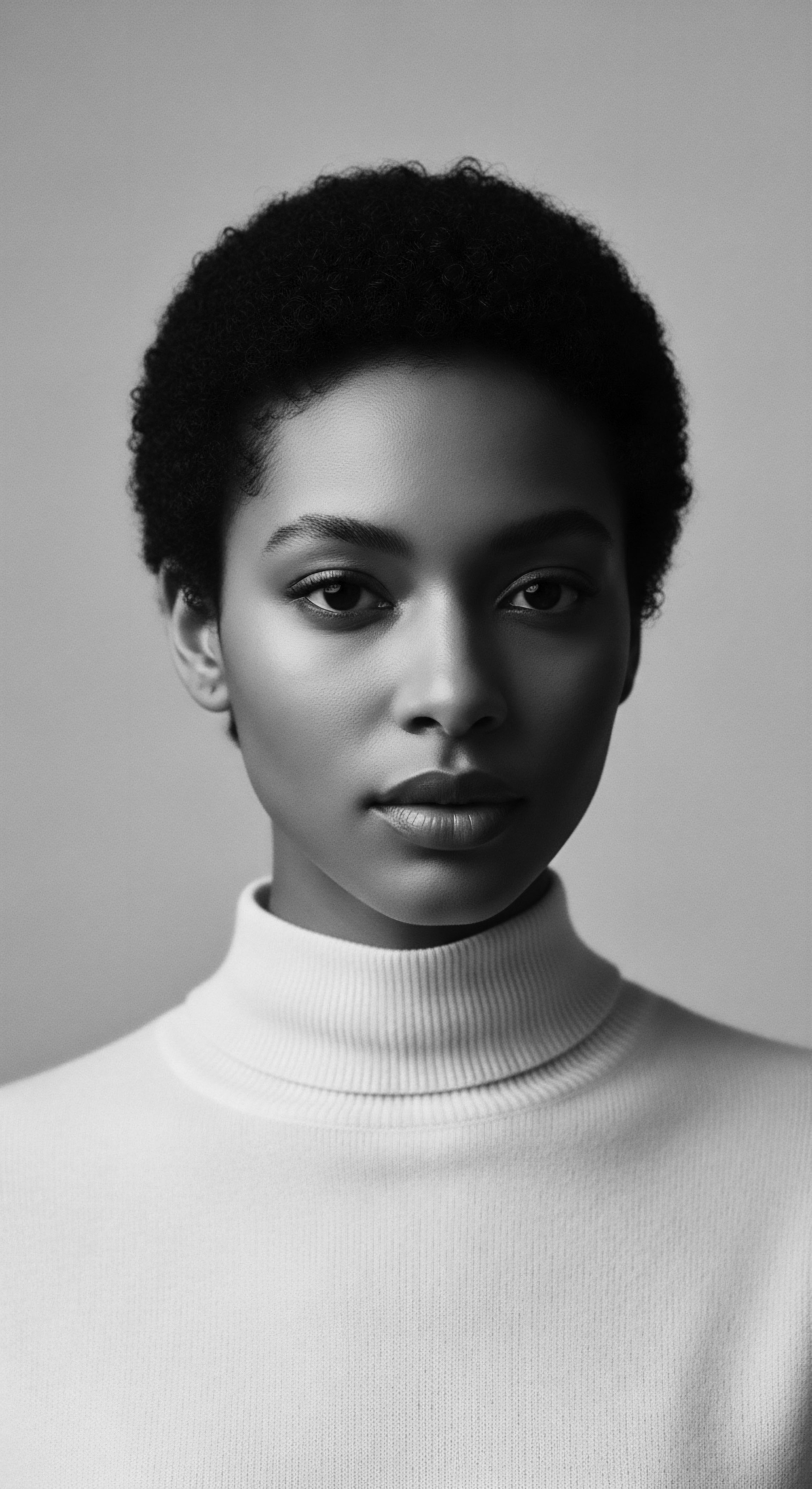
Protective Styling’s Ancestral Roots
Protective styles—braids, twists, cornrows, and their countless variations—are cornerstones of textured hair care, minimizing manipulation and guarding delicate strands from environmental elements. These styles are not modern inventions; they possess deep ancestral roots, with patterns often carrying tribal affiliation, marital status, or social rank. Into these heritage practices, rhassoul clay often finds its place as a preparatory or supporting element.
Before the skilled hands began their intricate work, the hair and scalp received careful attention. A rhassoul clay wash or masque would purify, leaving the canvas clean and receptive, while also depositing minerals that would quietly reinforce the hair’s internal structure before it was gathered into protective formations.
The cleansing action of rhassoul clay is unique; it contains natural saponins, allowing it to cleanse without harsh surfactants that strip hair of its natural oils. This gentle purification is particularly beneficial for textured hair, which is prone to dryness. By removing buildup and excess sebum without dehydrating the hair, rhassoul clay helps maintain the hair’s natural moisture balance, a critical aspect of resilience, especially when preparing for styles that will remain for extended periods. The outcome is hair that is not only cleansed but also left supple, ready to be manipulated gently into enduring styles that honor tradition and protect the hair’s health.
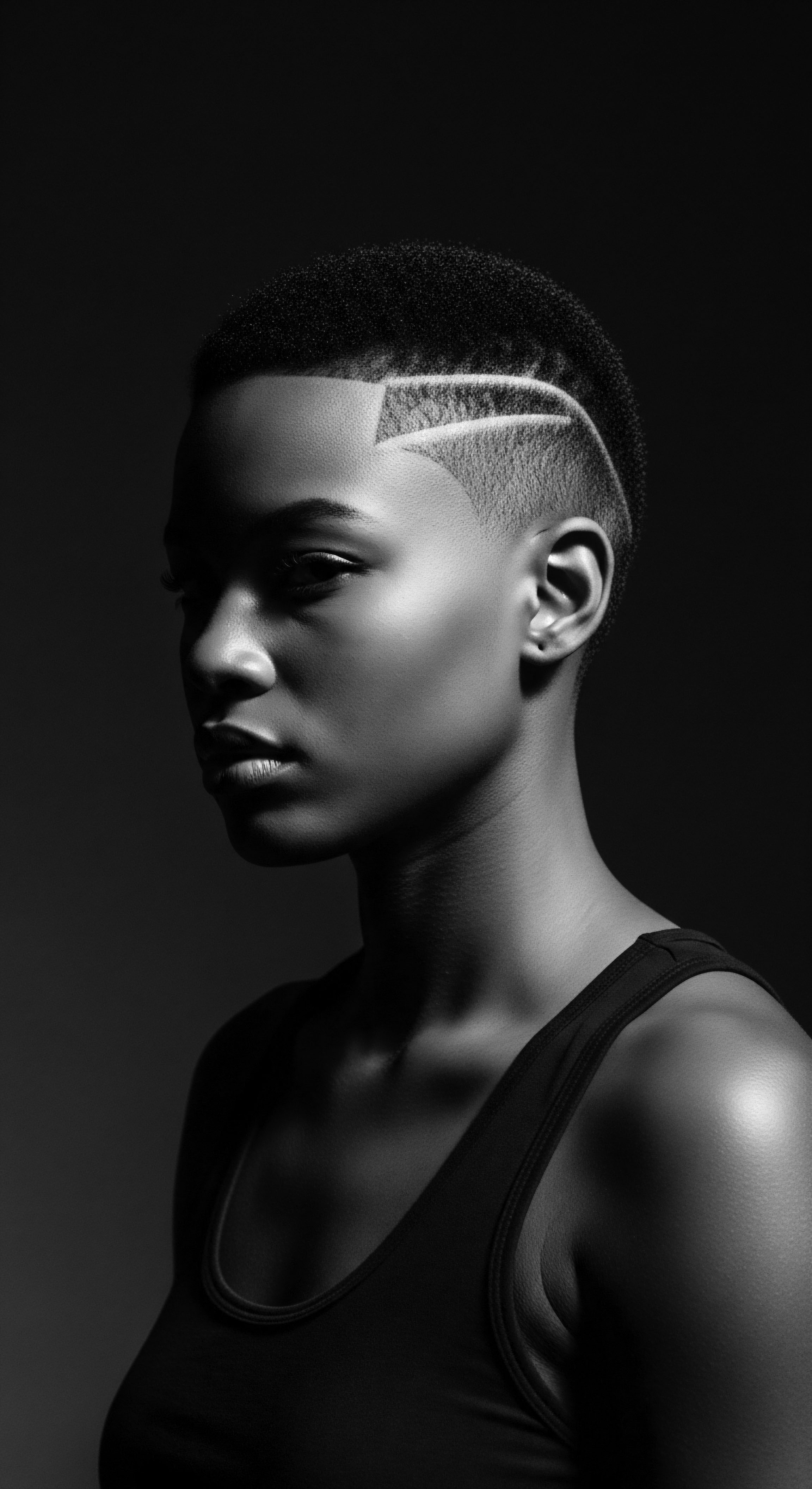
Can Rhassoul Clay Elevate Textured Hair’s Definition?
Natural styling, celebrating the inherent curl and coil patterns, is a powerful expression of textured hair identity. Rhassoul clay can certainly play a role in this, assisting in definition by enhancing hair’s natural texture and bounce. When used as a conditioning cleanser or a light rinse, the clay’s properties help to clarify the hair without over-drying, allowing the natural curl pattern to spring forth with greater clarity and less frizz. Its mineral content, including silica and magnesium, contributes to a smoother cuticle, which reflects light more effectively, providing a natural sheen that speaks to the hair’s overall vitality.
Traditional methods for definition often involved a blend of natural emollients and careful manipulation. Rhassoul clay complements these methods by preparing the hair, ensuring it is clean and free of residue that might weigh down curls or obscure their natural formation. Think of the way historical artistry prepared a surface before applying pigment; the clay offers a similar foundational readiness for styling.
| Historical Application Hammam Ritual Cleansing ❉ Used as a natural soap in North African hammams for centuries to purify hair and body. |
| Modern Scientific Understanding Saponin Presence ❉ Contains natural saponins, offering gentle cleansing without stripping natural oils, ideal for textured hair’s moisture needs. |
| Historical Application Pre-braiding Treatment ❉ Applied before intricate protective styles to clean and prepare hair for longevity. |
| Modern Scientific Understanding Mineral Fortification ❉ Deposits minerals like silica and magnesium, supporting hair fiber strength and elasticity, which helps hair endure manipulation. |
| Historical Application Ancestral Hair Masque ❉ Mixed with herbs and waters to nourish scalp and hair, promoting overall health. |
| Modern Scientific Understanding Scalp pH Balance and Detoxification ❉ Helps balance scalp pH, absorbs excess sebum and impurities, creating an optimal environment for hair growth. |
| Historical Application The enduring presence of rhassoul clay speaks to a continuum of care, where ancient wisdom finds resonance in contemporary understanding. |
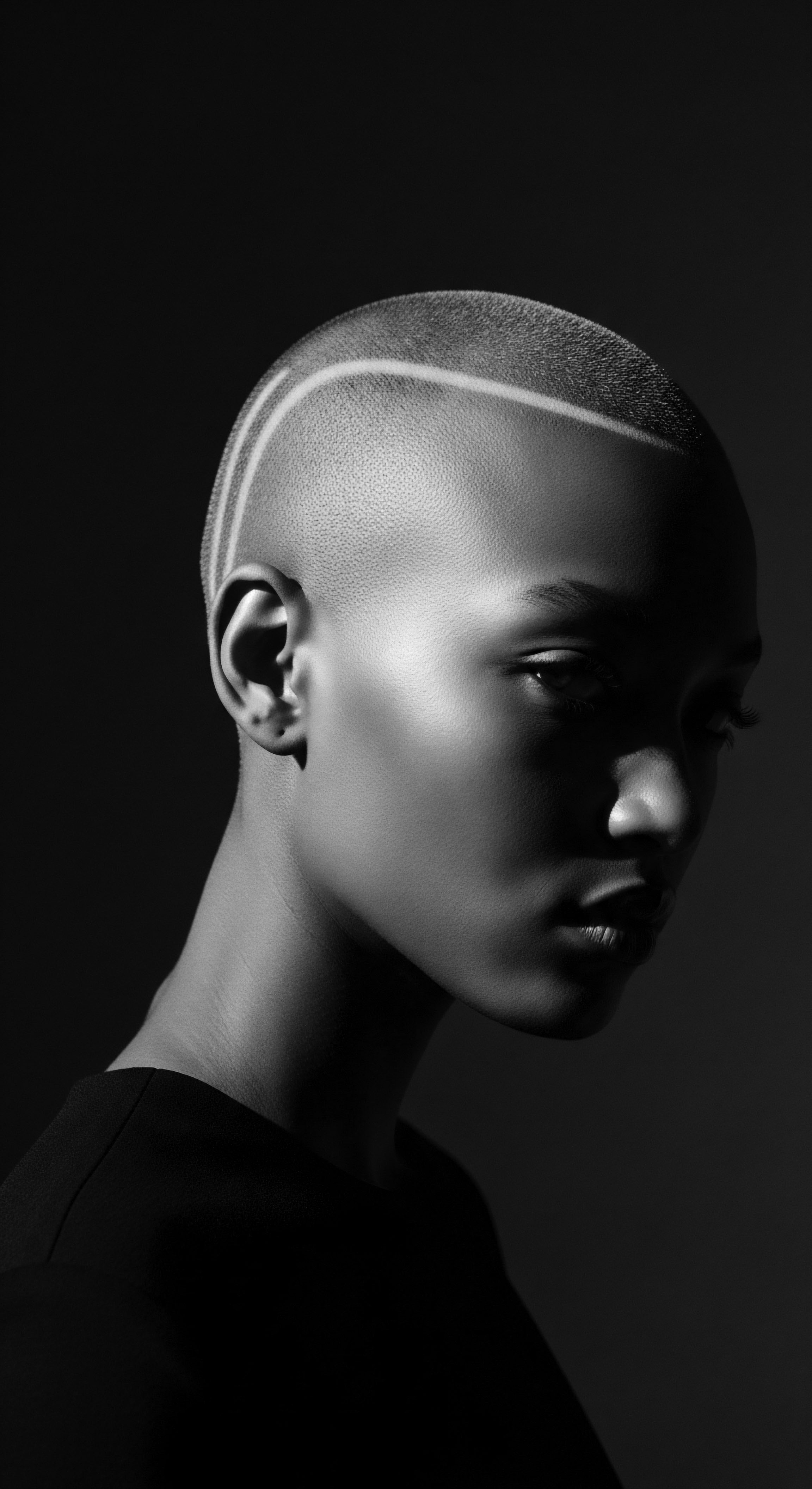
The Complete Textured Hair Toolkit
The tools of textured hair care, from wide-tooth combs carved from wood to specific braiding implements, have their own rich histories. These implements, often crafted with intention, reflect the respect and understanding accorded to hair within cultural contexts. The integration of rhassoul clay into such a toolkit speaks to its role as a fundamental ingredient, much like the cherished oils and butters that have sustained hair for ages.
For instance, the preparation of rhassoul clay for use often involves non-metallic bowls and utensils, a practice rooted in traditional knowledge to preserve the clay’s properties. This attention to detail, this almost ritualistic preparation, underscores the value placed on natural ingredients and the belief in their inherent power. The act of mixing the clay, feeling its texture, and applying it to the hair becomes a meditative moment, connecting the user to generations of hands that performed the same gesture.
Rhassoul clay, in its traditional application, transforms cleansing into a grounding ritual, strengthening hair from within while honoring its ancestral story.
While heat styling presents modern challenges to textured hair’s resilience, historical practices often contrasted with this. Ancestral methods focused on air drying, threading, or low-tension manipulation, minimizing the need for intense heat. Rhassoul clay’s role in facilitating clean, manageable hair reduces the dependency on harsh styling methods, aligning with a gentler approach that prioritizes the health and longevity of the hair fiber. Its historical presence serves as a subtle reminder of hair care philosophies that sought to preserve, rather than radically alter, the hair’s natural state.

Relay
The endurance of rhassoul clay in textured hair care, spanning continents and centuries, is not merely a nostalgic harkening to the past; it embodies a profound relay of knowledge. It is a dialogue between the wisdom of ancestors and the insights of modern science, each illuminating the other in the pursuit of hair resilience. This section plunges into the deeper scientific mechanisms that underpin rhassoul clay’s efficacy, anchoring these revelations firmly within the context of textured hair heritage and the experiences of Black and mixed-race communities. We analyze its complexities, considering the interplay of scientific data and historical practices, moving beyond surface-level understanding.

Mineralogy’s Ancestral Resonance
Rhassoul clay, scientifically classified as a stevensite, a magnesium-rich clay, emerges from unique geological deposits within the Moroccan Atlas Mountains. Its mineral composition is a symphony of elements ❉ significant proportions of silica, magnesium, calcium, and potassium. These are not inert substances; they are active participants in hair biology. Silica, for example, is a fundamental building block for collagen, a protein vital for hair’s structural integrity and elasticity.
Magnesium is known to soothe irritated scalps and can stimulate hair growth. Calcium aids in regulating sebum and supports the regeneration of skin cells, crucial for a healthy scalp, which is the very foundation of resilient hair.
The traditional use of rhassoul clay in North African households, meticulously processed and often infused with fragrant herbs, was an intuitive application of these very principles. Imagine generations of women, without the aid of chemical laboratories, discerning through observation and shared experience that this particular earth substance provided unparalleled cleansing and conditioning. They observed hair that was soft, strong, and reflective of health. This empirical knowledge, accumulated over thousands of years, predates modern scientific validation but speaks to an acute awareness of nature’s offerings.
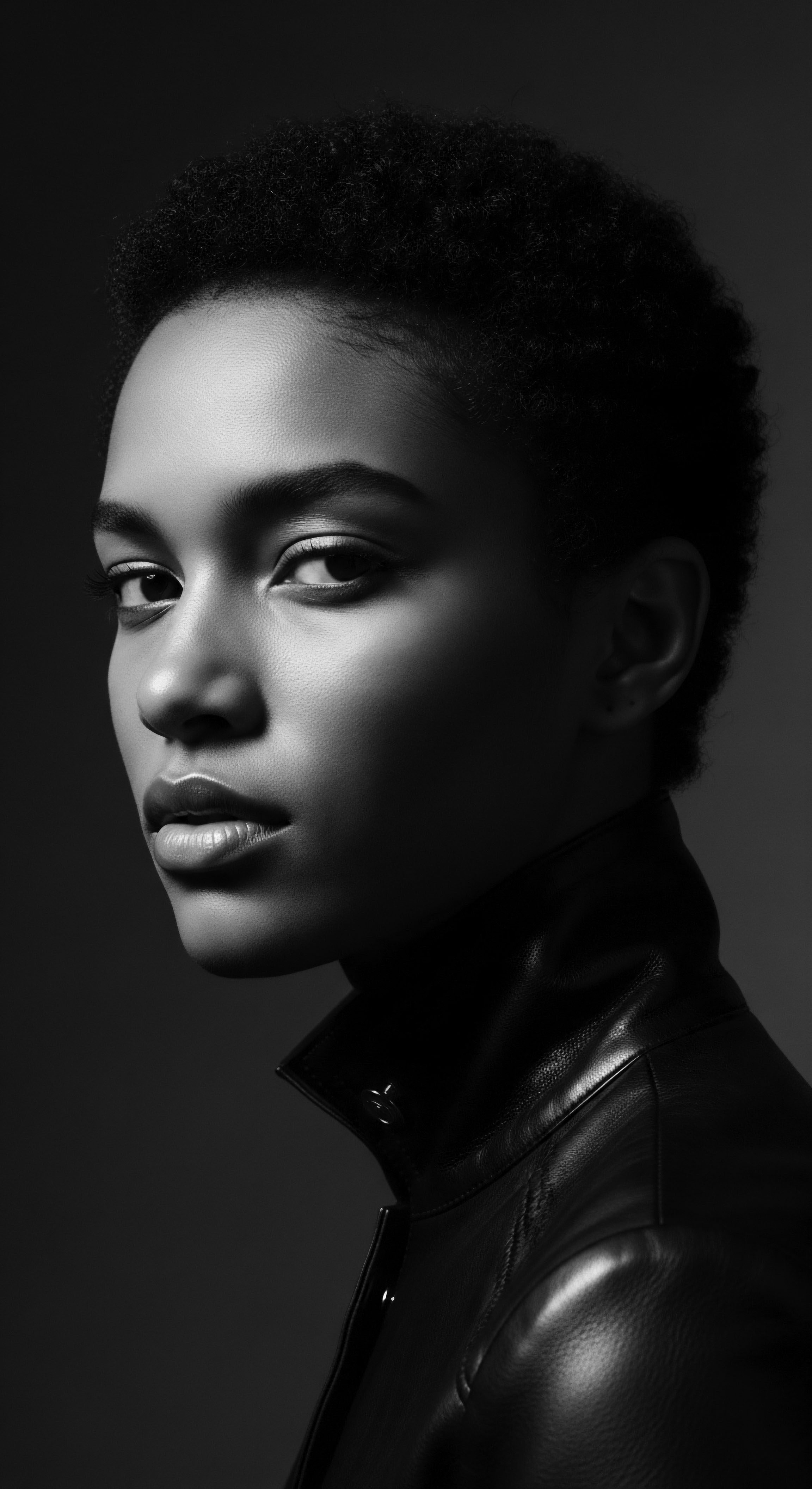
Electrochemical Dynamics and Hair Integrity
The power of rhassoul clay extends to its electrochemical properties. Clay minerals, including rhassoul, possess a natural negative electrical charge. This characteristic allows them to attract and bind to positively charged impurities, toxins, and excess oils present on the hair and scalp.
When rhassoul clay is applied as a paste, it acts like a gentle magnet, drawing out unwanted substances without stripping the hair’s natural protective sebum layers. This process of ion exchange leaves the hair and scalp remarkably clean yet not dehydrated.
For textured hair, this gentle yet effective cleansing is paramount. Coily and curly hair patterns, with their numerous bends, can inadvertently trap dirt, product buildup, and environmental pollutants, leading to dullness, itchiness, and breakage. Harsh shampoos can exacerbate dryness, creating a cycle of fragility.
Rhassoul clay offers a solution that respects the hair’s inherent need for moisture. Its ability to purify without disrupting the scalp’s natural pH balance or the hair’s delicate lipid barrier contributes directly to resilience—hair that can withstand daily environmental stressors and styling.
Rhassoul clay’s scientific efficacy mirrors ancestral understanding, revealing how its mineral properties contribute profoundly to textured hair resilience.
A powerful instance of clay’s role in ancestral care is found in the practices of the Himba People of Namibia. For centuries, Himba women have applied a paste known as ‘otjize’ to their skin and hair. This paste is a mixture of butterfat, ochre (a red clay), and aromatic herbs. While the primary function is often perceived as aesthetic and protective against the harsh desert sun and insect bites, ethnological observations suggest a deeper connection to hair health and resilience.
The clay component, rich in minerals, would have contributed to both cleansing and strengthening the hair, allowing it to withstand extreme environmental conditions and retain remarkable length and health. This multi-generational practice, documented by observers of their traditional lifestyle, offers a compelling, albeit less commonly cited, example of how clay-based applications contributed to the tangible resilience and vitality of textured hair in an ancestral context. (Doria Adoukè, 2022).

Can Rhassoul Clay’s PH Balance Properties Support Longevity in Textured Hair?
The pH of hair and scalp plays a vital role in its health and resilience. Healthy hair typically maintains a slightly acidic pH, which helps keep the cuticle scales closed and smooth, minimizing friction and breakage. Many conventional hair products are alkaline, which can lift the cuticle, making hair rougher and more susceptible to damage. Rhassoul clay, with its slightly alkaline nature, acts as a rebalancing agent.
When mixed with water, it creates a paste that helps to neutralize the acidity of modern pollution and product residue. This rebalancing supports a healthy scalp environment, discouraging fungal overgrowth and supporting beneficial bacterial flora, which are critical for long-term hair health.
The concept of balance was a subtle but central tenet in ancestral wellness philosophies. While not articulated in terms of pH, the selection of ingredients like rhassoul clay, often combined with acidic rinses (such as hibiscus or fermented ingredients), suggests an intuitive understanding of equilibrium. This balance, whether observed through the softness of the hair or the comfort of the scalp, was directly linked to the hair’s ability to resist damage and maintain its vibrancy across a lifetime.
- Silica ❉ A mineral that aids in strengthening hair shafts and promoting elasticity.
- Magnesium ❉ Helps soothe scalp irritation and supports healthy hair growth.
- Calcium ❉ Contributes to regulated sebum production and healthy hair structure.
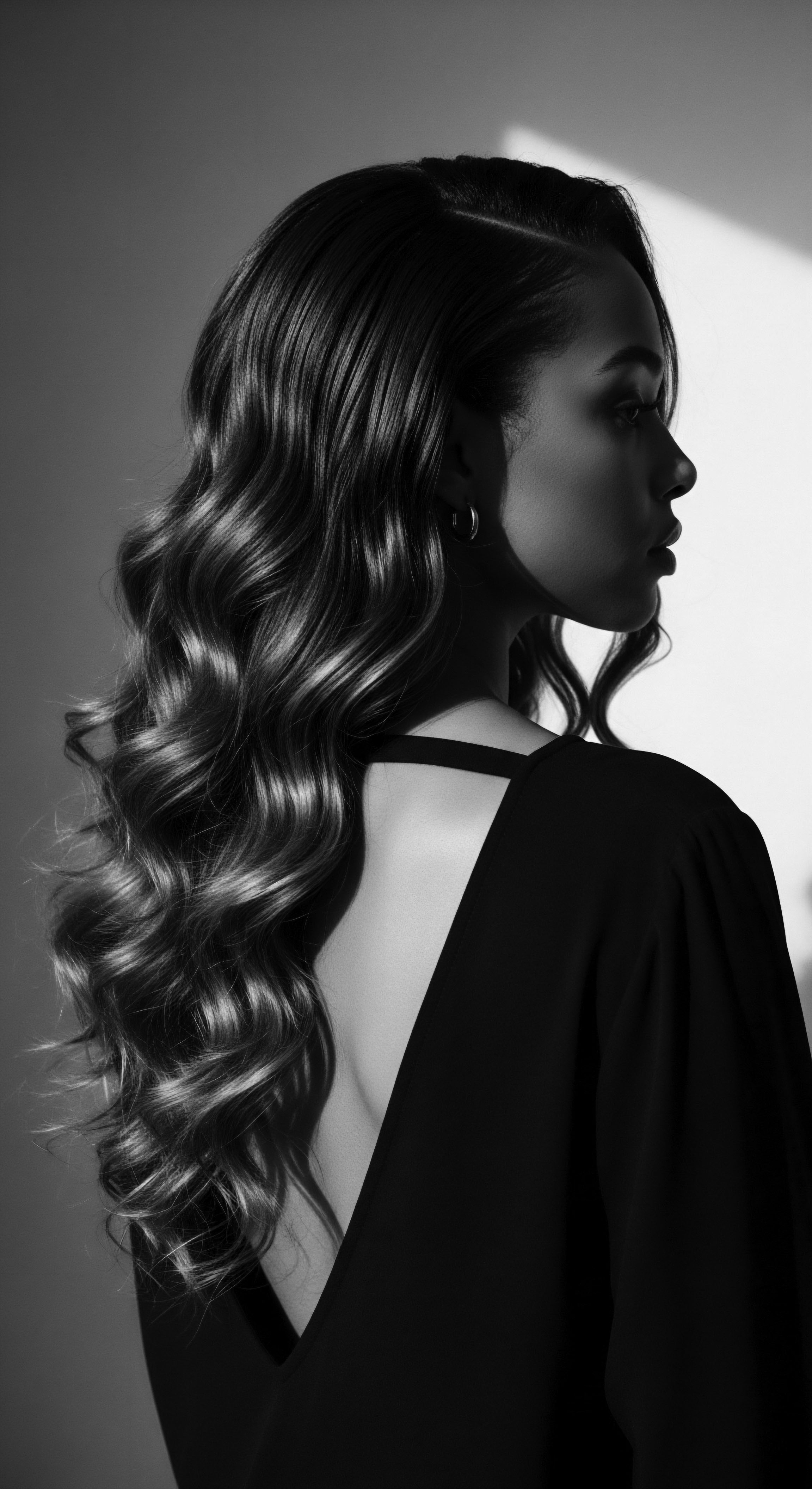
Data and The Interplay of Factors
Modern research, while still limited in specific clinical trials for rhassoul clay on textured hair, corroborates many of the anecdotal benefits. Studies on the mineralogical and physicochemical characteristics of rhassoul clay confirm its high absorption capacity, its ion-exchange properties, and its gentle cleansing action. This scientific backing provides a lens through which to appreciate the empirical wisdom of previous generations.
The resilience of textured hair is a complex interplay of genetic predisposition, environmental factors, care practices, and internal wellness. Rhassoul clay, by addressing cleansing, mineral replenishment, and pH balance, touches upon multiple facets of this intricate equation. Its contribution to overall hair health, by creating a clean, mineral-rich, and balanced environment, supports the hair’s natural defenses against chemical and physical damage. This deep understanding, bridging ancient practice with scientific insight, allows us to truly appreciate rhassoul clay as a conduit for preserving and enhancing textured hair’s inherent fortitude, continuing a lineage of care.
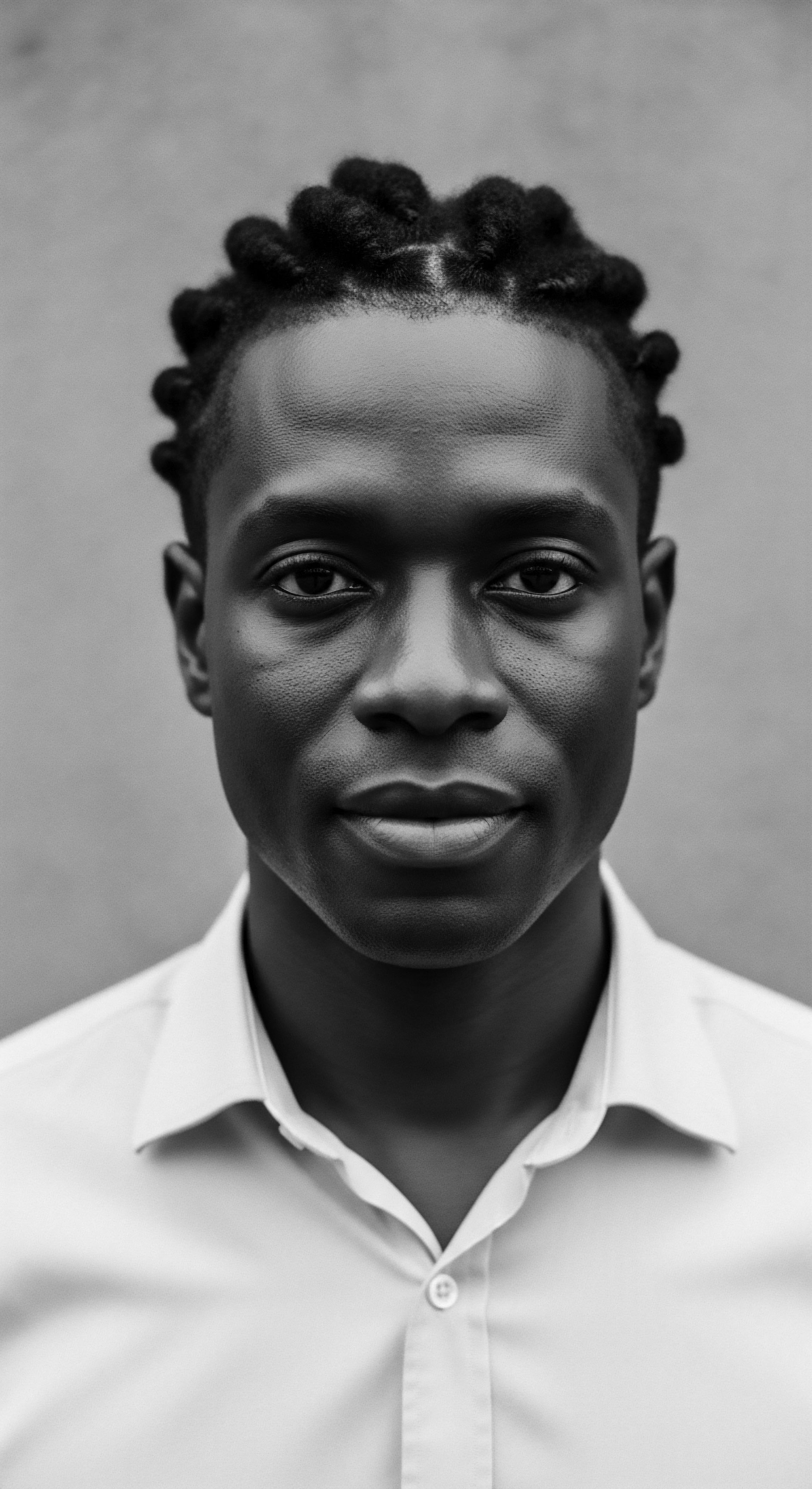
Reflection
As our exploration of rhassoul clay and its profound connection to textured hair resilience concludes, we find ourselves standing at the confluence of elemental earth and enduring spirit. The journey has taken us through the mineral-rich heart of Morocco, across generations of ancestral wisdom, and into the precise language of modern science. What remains is a clear understanding that the strength of textured hair, its capacity to endure, to flourish, to defy adversity, is not an isolated biological trait. It is a legacy, a living testament to the human spirit’s ability to find harmony with nature, to innovate, and to preserve.
Rhassoul clay, this ancient brown earth, serves as more than just a cosmetic ingredient. It functions as a tangible link to a heritage of self-sufficiency, a time when care was sourced directly from the land and infused with intention. The women who first mixed this clay with water, whose hands gently worked it into coils and curls, were not merely cleaning hair; they were performing a quiet act of reverence, contributing to a continuous story of beauty and survival. Their practices, honed by observation and passed down through the ages, remind us that the most potent solutions often lie in the simplest, most fundamental elements.
The “Soul of a Strand” ethos, central to our discourse, finds a compelling echo in rhassoul clay. It underscores the belief that each strand of textured hair carries within it a piece of history, a whisper of ancestral strength. To care for this hair with rhassoul clay is to engage in a dialogue with that past, to honor the ingenuity and resilience of those who navigated their world with wisdom and grace. It is to recognize that true hair health is not a pursuit of perfection as defined by narrow standards, but a celebration of authentic vitality, nurtured by practices that respect its unique biology and its rich cultural journey.
The legacy of rhassoul clay invites us to consider care not as a chore, but as a cherished ritual. It suggests that our contemporary understanding of resilience, amplified by scientific validation, only deepens our appreciation for the ancestral knowledge that laid its groundwork. For textured hair, its heritage is its strength, and in rhassoul clay, we discover a powerful, earthy ally in preserving that magnificent inheritance for generations yet to come. The story of hair continues, written in every well-tended coil, every resilient curl, drawing strength from the earth and wisdom from time.

References
- Argiletz. Ghassoul clay ❉ benefits and uses in beauty care. Argiletz.
- Bettiche, O. Melhaoui, A. & Malek, F. (2012). Mineralogical and Physico-Chemical Characterization of the Rhassoul Clay of Morocco. Clay Minerals.
- Doria Adoukè. (2022). Africa & Long Hair – The Himba Tribe | Hair History in Africa | The Original Clay Hair Mask?. YouTube.
- FullyVital. (2023, October 1). The Magic Of Rhassoul Clay ❉ A Natural Hair Growth Solution. FullyVital.
- Helenatur. (2020, March 5). Rhassoul clay. Helenatur.
- MINATURE. (2024, November 25). Benefits and Uses Of Moroccan Rhassoul Clay for Hair & Skin. MINATURE.
- Natural Spa Supplies. (2008, December 26). Properties of Rhassoul Clay. Natural Spa Supplies.
- Nowiamnappy’s. (2019, August 27). Rhassoul Clay for Skin and Hair Benefits. Nowiamnappy’s.
- Rastta Locs | Rasttafari Haircare. (n.d.). Rhassoul Clay ❉ A Moroccan Treasure for Hair Health. Rastta Locs | Rasttafari Haircare.
- Shakara Natural Tips. (2021, January 6). What is Rhassoul Clay?. Shakara Natural Tips.
- Souhail, B. Idrissi, L. Mouhib, M. et al. (2013). Physicochemical and Mineralogical Characterization of a Natural Moroccan Clay ❉ Rhassoul. Journal of Materials and Environmental Science.
- WebMD. (2024, February 28). What to Know About Rhassoul Clay. WebMD.
